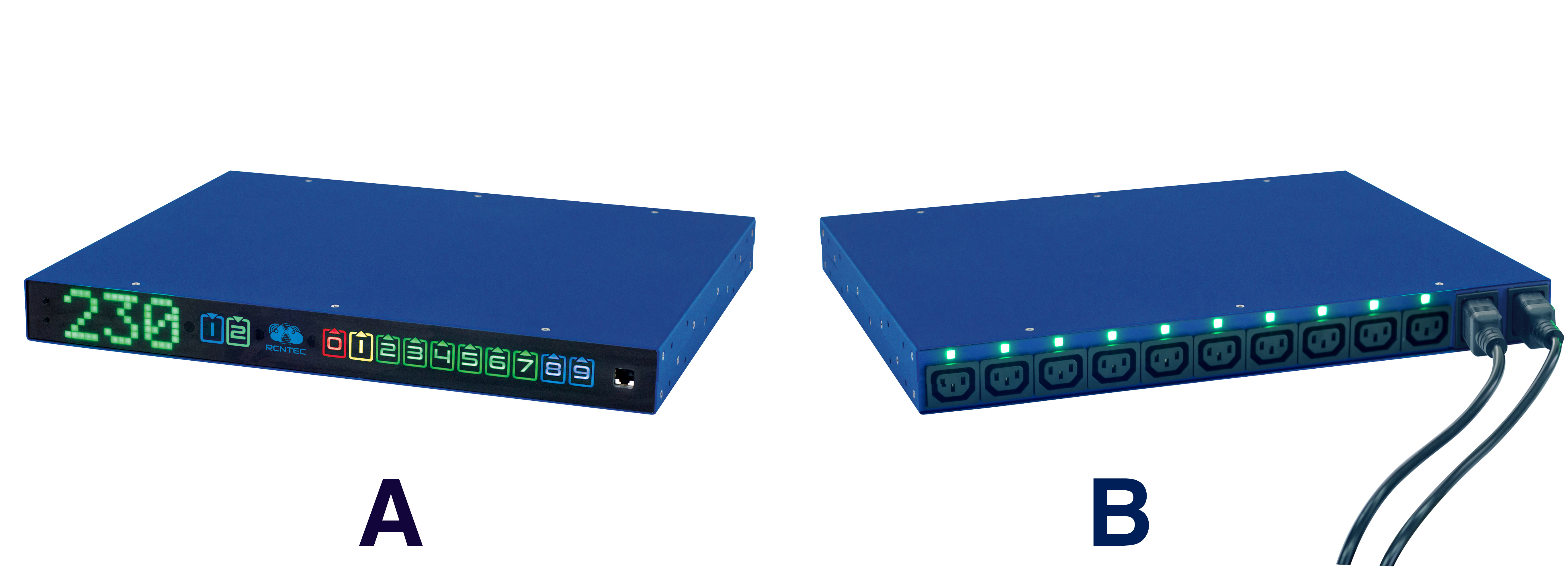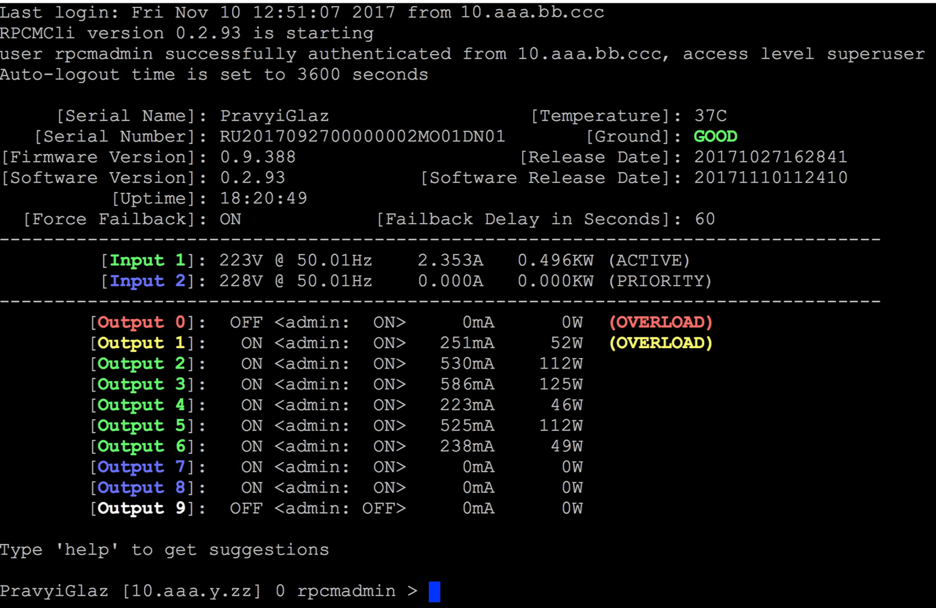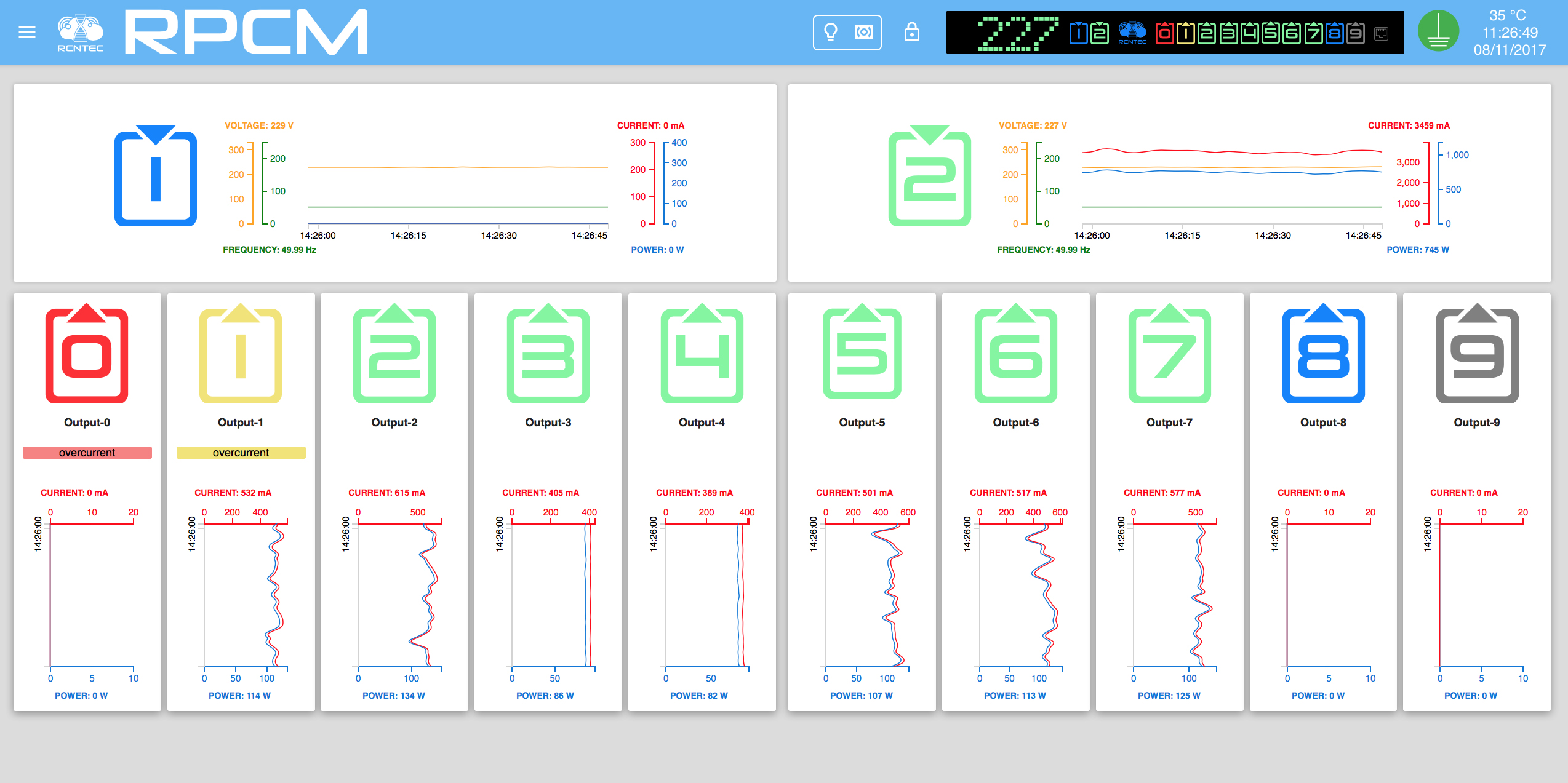"All-in-one" PDU, or super-functional PDU, is a novel solution for datacenters
The market of power distribution units (PDUs) is flooded with different types of such devices as basic PDUs (in fact, simply supply network-grade power distribution to multiple devices), metered ones (show real-time load monitoring on the input side), monitored ones (provide monitoring over the network), switched PDUs (overall control of outlets and networking clients by switching them on/off and remotely rebooting connected equipment), switched metered-by-outlets PDUs which encompass all the functionality of previous lower level devices and make it even more advanced featuring monitoring power consumption of individual outlets in real-time over the network, switching them on/off remotely for unscheduled reboots, automated load shedding, controlled power-cycling, and more.
Separate group of PDUs constitute Automatic Transfer Switch (ATS) devices designed to provide power redundancy by being plugged into two independent power sources. Should the power of the primary source fail or exceed lower or upper threshold, the PDU will switch to the secondary (reserve) one to ensure continuous operation of connected single-corded equipment.
Until now, PDU manufacturers never endeavored to produce “all-in-one” multi-featured PDU. In particular, combining functionality of remote monitoring and control of outlets individually and ATS as redundant power supply, and what’s more important, circuit breakers for each outlet, has not been realized by none of concerned companies. Mainly it is due to incompatibility of principal components upon which separate groups of functions are built, being at the same time the result of combining Lego-like blocks of electric parts to introduce a specific kind of activity. For instance, until now there was no other way to implement circuit breakers for every outlet in case of the short circuit occurring in the equipment connected to a particular outlet of PDU, other than controlling for short circuit on the input side or on the whole group of outlets of a PDU. In either case, deactivation affected all single-cord equipment connected to outlets, therefore making it difficult to find out in what specific outlet it happened as well as which one out of connected equipment caused it.
However, recently an innovation introduced by engineers of our company has gained a vivid interest by datacenters and industrial IT companies. We began to actively trade our brand product – Resilient Power Control Module (RPCM) - see Fig. 1,- in which functions previously seemed incompatible were joined together based on re-engineered circuit motherboard which rejected Lego-like approach of building components to reach certain functionality.

Figure 1. RPCM: A) Frontal view; B) Rear view
Automatic Transfer Switch (ATS) provides much economy for datacenters
Classically, to enhance the resilience to power outages, fails, and other emergency, datacenters used to resort to:
a) equip their industrial spaces with highly-potent UPSs horizontally or vertically scalable, or
b) opt for acquiring underlying equipment (servers, switches, storage systems, etc) containing two power supplies, thereby acting as ATS itself, i.e. individually, or
c) the combination of both above approaches
Whatever decision a datacenter management has had made, it inevitably has been facing increased expenditures stemming from making purchases of high-end expensive equipment.
In case with RPCM there is no need to consider either of mentioned solutions. Suffice it to connect single-cord equipment to one of the 10 outputs RPCM has, and ATS feature will do the rest of job for you, namely, whenever power fails occurs, switching to the reserve line is guaranteed within 14 ms. The same logic applies when input’s voltage or frequency deviates from designated safe operating range (Fig. 2). In doing so, a datacenter can get rid of a risk to have the vital equipment unexpectedly going down should the power emergency take place.
Moreover, performing power line switches between two inputs can be enabled by a user remotely, if, for example, a need of a main UPS (connected to the primary input) changing and/or repairing arises. This is a new way to integrate a maintenance bypass function into underlying power supply system.

Figure 2. RPCM status window (opened in CLI) shows that primary input 1 (green) is distributing power to 6 outputs (1 through 6) and secondary input 2 (blue) is ready to assume the service at any time of power emergency from input 1.
Monitoring and controlling by outlet suit better colocation service clients
RPCM can be remotely monitored and controlled using proprietary network management software via web-interface (Fig. 3), command line interface, SNMP, or REST API. Out of the long list of its functions, it is worth concentrating on the by-outlet management.

Figure 3. Web-interface of RPCM in View Mode.
It allows to monitor the power consumption of individual outlets in real-time over the network and set user-defined level ranges of current (in Amps), voltage (in Volts), power being consumed (in Watts), as well as specify actions if the limits are not observed, schedule rebooting unresponsive devices, shedding non-essential loads, locking out unused outlets. What’s more, administrator is able to configure the booting sequence of outlets, inter-booting time intervals among outlets once RPCM is started or restarted.
The full independence of on-site maintenance, or complete freedom for remote device operation, is accomplished by integrating a circuit breaker feature on every outlet so that it prevents the whole device or group of 10 outlets from becoming inactive due to short circuit occurrences of a particular connected equipment. Indirectly, such control will also take care of on-site fire initiation.
Logged electric power metering by outlet is indispensable for colocation service providers, especially datacenters. With RPCM, a provider can allocate dedicated outlets to its clients enabling latter to flexibly administer their equipment installed on host-provider industrial space. Clients will have more information on the power performance of each equipment placed in colocation, manage it remotely including for unscheduled reboots, automated load shedding, controlled power-cycling, etc. At the same time, colocation service providers will have more options for diversification of their tariffs introducing cheaper plans for their clients.
Finally, owning a versatile PDU which combines ATS, by-outlet metering and controlling, per-outlet circuit breaker functionality totaling in 10 outlets neatly arranged in 1U form-factor will significantly reduce the overall cost of resilient power supply to critical rack-mounted equipment for datacenters.
For more information about our products or services, please contact us
